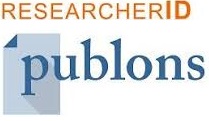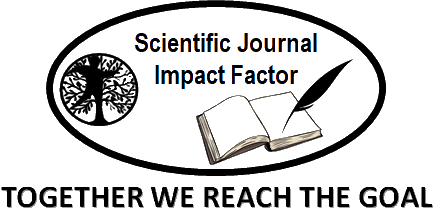The Effect of Various Ca2+ Elicitor Concentrations on Catechin Content in Gambir (Uncaria gambir (Hunter) Roxb.) Callus In Vitro
Abstract
Keywords
Full Text:
PDFReferences
A. Zainal, I. Ferita, Gustian, and Warnita, Kajian Karakterisasi Terkait Potensi Kadar Katekin Pada Tanaman Gambir (Uncaria gambir (Hunt) Roxb). 2022.
N. Yunarto, B. Elya, and L. Konadi, “Potensi Fraksi Etil Asetat Ekstrak Daun Gambir (Uncaria gambir Roxb.) sebagai Antihiperlipidemia,” J. kefarmasian Indones., vol. 5, no. 1, pp. 1–10, 2015.
N. Yunarto, U. N. Reswandaru, I. Sulistyowati, I. O. Prameswari, Q. L. Pinanditi, and T. M. Patadungan, “Validation of Spectrophotometry Method For Determination of (+)-Catechin in Ethyl Acetate Fraction of Gambir Extract (Uncaria gambir Roxb.),” J. Tumbuh. Obat Indonesia., vol. 14, no. 2, pp. 127–136, 2021, doi: 10.22435/jtoi.v14i2.4846.
N. Yunarto, I. Sulistyowati, U. N. Reswandaru, B. Elya, R. Sauriasari, and L. Konadi, “Inhibitory Activity of Uncaria Gambir Roxb Extract, Ethyl Acetate Fraction, and Catechin Isolate on Lipase,” AIP Conf. Proc., vol. 2606, no. January, 2023, doi: 10.1063/5.0118363.
A. Zainal, A. Anwar, S. Lopita, and A. Zainal, “Identification of Gambier Plant [Uncaria gambir [Hunter] Roxb] Pollination System,” IOP Conf. Ser. Earth Environ. Sci., vol. 497, no. 1, 2020, doi: 10.1088/1755-1315/497/1/012009.
[BPS] Badan Pusat Statistik Sumatera Barat, “Luas Lahan dan Produksi Gambir Menurut Kabupaten/Kota di Provinsi Sumatera Barat 2018-2022.” [Online]. Available: https://sumbar.bps.go.id/
W. Nasrul, “Strengthening Gambier Market Through Optimizing Local Institutions in Indonesia,” Int. J. Nat. Soc. Sci., vol. 2020, no. 1, pp. 5–09, 2020, [Online]. Available: www.ijnss.org
M. Rizki, I. Dwipa, and A. Zainal, “Self-Pollinated (Geinotogami) of Uncaria gambir (Hunter) Roxb. Type Udang,” Asian J. Adv. Agric. Res., vol. 14, no. 4, pp. 1–7, 2020, doi: 10.9734/ajaar/2020/v14i430136.
A. Zainal, Monaliatrisna, M. Kasim, Gustian, Warnita, and R. Yunita, “Seed Physiological Quality Testing Gambir (Uncaria gambir roxb.) at Various Ages of Harvest,” Agric. Sci. Dig., vol. 43, no. 5, pp. 604–609, 2023, doi: 10.18805/ag.DF-538.
A. Amos, “Kandungan Katekin Gambir Sentra Produksi Di Indonesia,” J. Stand., vol. 12, no. 3, p. 149, 2010, doi: 10.31153/js.v12i3.152.
S. Hutami, “Tinjauan Penggunaan Suspensi Sel dalam Kultur In Vitro,” J. AgroBiogen, vol. 5, no. 2, p. 84, 2016, doi: 10.21082/jbio.v5n2.2009.p84-92.
Caldentey and W. H. Barz, Plant Biotechnology and Transgenic Plants. 2002.
W. Purwianingsih, S. Febri, and K. Kusdianti, “Formation Flavonoid Secondary Metabolites in Callus Culture of Chrysanthemum cinerariefolium as Alternative Provision Medicine,” AIP Conf. Proc., vol. 1708, no. 2016, 2016, doi: 10.1063/1.4941150.
W. Purwianingsih and Y. Hamdiyati, “Metode Elisitasi Menggunakan Ragi Sacharomyces cerevisiae H. untuk Meningkatkan Kandungan Bioaktif Kuinon Kalus Morinda citrifolia L. (Mengkudu),” pp. 1–14, 2007.
D. Retnaningati, Hermanto, E. Purwijantiningsih, and H. R. L. Solle, “Pertumbuhan Kalus dan Produksi Katekin pada Kultur In Vitro Kalus Teh (Camelia Sinensis L.) dengan Penambahan Elisitor Ca2+ dan Cu2+,” Biota J. Ilmu-Ilmu Hayati, vol. 6, no. Oktober, pp. 192–202, 2021, doi: 10.24002/biota.v6i3.5278.
P. Zornoza, S. Vázquez, E. Esteban, M. Fernández-Pascual, and R. Carpena, “Cadmium-stress in nodulated white lupin: Strategies to avoid toxicity,” Plant Physiol. Biochem., vol. 40, no. 12, pp. 1003–1009, 2002, doi: 10.1016/S0981-9428(02)01464-X.
W. Roos, S. Evers, M. Hieke, M. Tschöpe, and B. Schumann, “Shifts of Intracellular pH Distribution as a Part of the Signal Mechanism Leading to the Elicitation of Benzophenanthridine Alkaloids,” Plant Physiol., vol. 118, no. 2, pp. 349–364, 1998, doi: 10.1104/pp.118.2.349.
K. Yan, R. Li, and Q. Wei, “Effect of Ca2+-Mediated Endophytic Fungal Elicitors on Essential Oil Accumulation in Suspension Cells of Cinnamomum longepaniculatum,” OALib, vol. 06, no. 09, pp. 1–11, 2019, doi: 10.4236/oalib.1105764.
H. Hamada et al., “Regulation of a Proteinaceous Elicitor-Induced Ca2+ influx and Production of Phytoalexins by a Putative Voltage-Gated Cation Channel, OsTPC1, in Cultured Rice Cells,” J. Biol. Chem., vol. 287, no. 13, pp. 9931–9939, 2012, doi: 10.1074/jbc.M111.337659.
I. Ariningsih, S. Solichatun, and E. Anggarwulan, “Callus Growth and Anthraquinones Production of Indian Mulberry (Morinda citrifolia L.) in Murashige-Skoog’s Medium (MS) Supplemented with Ca2+ and Cu2+,” Biofarmasi J. Nat. Prod. Biochem., vol. 1, no. 2, pp. 39–43, 2003, doi: 10.13057/biofar/f010201.
E. F. George, M. A. Hall, and G. J. De Klerk, “Plant Propagation by Tissue Culture 3rd Edition,” Plant Propag. by Tissue Cult. 3rd Ed., vol. 1, no. July, pp. 1–501, 2008, doi: 10.1007/978-1-4020-5005-3.
W. Enggarini and E. Marwani, “Pengaruh Cekaman Aluminium terhadap Kandungan Asam Organik dalam Kalus dan Pinak Tomat (Lycopersicon esculentum Mill.),” J. AgroBiogen, vol. 2, no. 1, p. 24, 2006, doi: 10.21082/jbio.v2n1.2006.p24-29.
M. Marlin, Y. Yulian, and H. Hermansyah, “Inisiasi Kalus Embriogenik pada Kultur Jantung Pisang ‘Curup’ dengan Pemberian Sukrosa, BAP dan 2,4-D,” 2012. [Online]. Available: https://api.semanticscholar.org/CorpusID:191518935
X. Sui, Z. Meng, T. Dong, X. Fan, and Q. Wang, “Enzymatic Browning and Polyphenol Oxidase Control Strategies,” Curr. Opin. Biotechnol., vol. 81, p. 102921, 2023, doi: https://doi.org/10.1016/j.copbio.2023.102921.
D. Wardhani, “Natrium Metabisulfit Sebagai Anti-Browning Agent Pada Pencoklatan Enzimatik Rebung Ori (Bambusa Arundinacea),” J. Apl. Teknol. Pangan, vol. 5, no. 4, 2016, doi: 10.17728/jatp.202.
Z. Ru, Y. Lai, C. Xu, and L. Li, “Polyphenol Oxidase (PPO) in Early Stage of Browning of Phalaenopsis Leaf Explants,” J. Agric. Sci., vol. 5, no. 9, pp. 57–64, 2013, doi: 10.5539/jas.v5n9p57.
I. Mellidou et al., “Transcriptomic Events Associated with Internal Browning of Apple During Postharvest Storage,” BMC Plant Biol., vol. 14, no. 1, pp. 1–17, 2014, doi: 10.1186/s12870-014-0328-x.
N. Permadi et al., “Traditional and Next-Generation Methods for Browning Control in Plant Tissue Culture: Current Insights and Future Directions,” Curr. Plant Biol., vol. 38, no. March, p. 100339, 2024, doi: 10.1016/j.cpb.2024.100339.
A. T. G. Utomo, “Pengaruh 2,4-D Terhadap Induksi Kalus Gambir (Uncaria gambir (Hunter) Roxb.) Secara In Vitro,” 2023.
Junairiah, Ni’matuzahroh, L. Sulistyorini, and N. I. Zuraidassanaaz, “Effect of Abiotic and Biotic Elicitors on Callus and Suspension From Piper betle L. var. Nigra,” Syntax Idea, vol. 5, no. 4, pp. 434–443, 2023.
E. C. Gemechu and G. Amante, “Control of browning in Plant Tissue Culture: A Review,” J. Sci. Innov. Res., vol. 10, no. 4, pp. 89–93, 2021, doi: 10.31254/jsir.2021.10402.
N. A. Habibah et al., “Growth and Production of Secondary Metabolites in the Callus of Bima Brebes Shallot Varieties,” Biodiversitas, vol. 25, no. 8, pp. 2811–2820, 2024, doi: 10.13057/biodiv/d250855.
N. Permadi et al., “Traditional and Next-Generation Methods for Browning Control in Plant Tissue Culture: Current Insights and Future Directions,” Curr. Plant Biol., vol. 38, no. January, p. 100339, 2024, doi: 10.1016/j.cpb.2024.100339.
M. Adil, X. Ren, and B. R. Jeong, “Light Elicited Growth, Antioxidant Enzymes Activities and Production of Medicinal Compounds in Callus Culture of Canidium officinale Makino,” J. Photochem. Photobiol. B Biol., vol. 196, 2019, doi: 10.1016/j.jphotobiol.2019.05.006.
I. Mahadi, W. Syafi’i, and Y. Sari, “Callus Induction of Calamansi (Citrus microcarpa) Using 2,4-D and BAP Hormones by In Vitro Methods,” J. Ilmu Pertan. Indones., vol. 21, no. 2, pp. 84–89, 2016, doi: 10.18343/jipi.21.2.84.
M. A. Syabana, P. Marianingsih, N. Hermita, and I. Rohimah, “Induksi dan Pertumbuhan Kalus Tanaman Stevia (Stevia rebaudiana Bertoni M.) dengan Perbedaan Konsentrasi PEG (Polyethylene Glycol) pada Kondisi Pencahayaan Secara In Vitro,” Biodidaktika, vol. 12, no. 2, pp. 1–2, 2017.
A. W. Pratama, S. R. Lestari, A. Gofur, and Y. Rakhmawati, “Phytochemical Screening, Total Phenol, and Antioxidant Activity of Methanol Extract of the Agung Banana Bunch Stem,” J. Pangan dan Gizi, vol. 12, no. 2, pp. 14–21, 2022.
Y. Rasud and B. Bustaman, “In Vitro Callus Induction from Clove (Syzigium aromaticum L.) Leaves on Medium Containing Various Auxin Concentrations,” J. Ilmu Pertan. Indones., vol. 25, no. 1, pp. 67–72, 2020, doi: 10.18343/jipi.25.1.67.
A. Wahyuni, B. Satria, and A. Zainal, “Induksi Kalus Gaharu dengan NAA dan BAP Secara In Vitro,” Agrosains J. Penelit. Agron., vol. 22, no. 1, p. 39, 2020, doi: 10.20961/agsjpa.v22i1.36007.
R. Busaifi and Hirjani, “Induction of Embryogenic Callus in Sugarcane (Saccharum officinarum L.) in Various Combinations of 2.4D and BAP Through in Vitro,” Agrosains, vol. 5, no. 2, pp. 91–102, 2018.
N. H. Nasution and I. W. Nasution, “The Effect of Plant Growth Regulators on Callus Induction of Mangosteen (Garcinia mangostana L.),” IOP Conf. Ser. Earth Environ. Sci., vol. 305, no. 1, 2019, doi: 10.1088/1755-1315/305/1/012049.
S. Niken Ariati et al., “Induksi Kalus Tanaman Kakao (Theobroma cacao L.) Pada Media MS Dengan Penambahan 2,4-D, BAP Dan Air Kelapa,” J. Nat. Sci. Desember, vol. 1, no. 1, p. 74, 2012.
S. Sutriana, “Application of Benzyl Amino Purine (BAP) on Adenium (Adenium obesum) Explants In Vitro,” pp. 1–10, 2007.
Junairiah, A. Rachmah, Y. S. W. Manuhara, Ni’matuzahroh, L. Sulistyorini, and Surahmaida, “Pengaruh Hormon Indole Butyric Acid (IBA) dan 6-Benzyl Amino Purin (BAP) terhadap Induksi Kalus Piper betle L. var Nigra,” J. Pharm. Sci., vol. 4, no. 2, pp. 85–90, 2019, doi: 10.53342/pharmasci.v4i2.141.
U. Santoso and F. Nursandi, Kultur Jaringan Tanaman, 1st ed. Malang: UMM Press, 2004.
D. Pandiangan and N. Nainggolan, “Peningkatan Kandungan Katarantin pada Kultur Kalus Catharanthus roseus dengan Pemberian Naphtalene Acetic Acid,” HAYATI J. Biosci., vol. 13, no. 3, pp. 90–94, 2006, doi: 10.1016/S1978-3019(16)30299-6.
A. Mack, “Separation of 10 Green Tea Components on an Agilent InfinityLab Poroshell 120 EC-C18, 1.9 µm Column,” pp. 1–4, 2016, [Online]. Available: https://r.search.yahoo.com/_ylt=Awrx_iwp8YRmTOsTqXXLQwx.;_ylu=Y29sbwNzZzMEcG9zAzEEdnRpZAMEc2VjA3Ny/RV=2/RE=1720017322/RO=10/RU=https%3A%2F%2Fwww.agilent.com%2Fcs%2Flibrary%2Fapplications%2F5991-7542EN.pdf/RK=2/RS=mLv_z1kYOjYvzjHj6rF7_2PYt8s-
I. Mahendra and M. Azhar, “Ekstraksi dan Karakterisasi Katekin dari Gambir (Uncaria gambir roxb),” J. Period. Jur. Kim. UNP, vol. 11, no. 1, p. 5, 2022, doi: 10.24036/p.v11i1.113262.
M. Ikeuchi, K. Sugimoto, and A. Iwase, “Plant Callus: Mechanisms of Induction and Repression,” Plant Cell, vol. 25, no. 9, pp. 3159–3173, 2013, doi: 10.1105/tpc.113.116053.
DOI: http://dx.doi.org/10.52155/ijpsat.v50.2.7193
Refbacks
- There are currently no refbacks.
Copyright (c) 2025 Ummi Hajra Dias

This work is licensed under a Creative Commons Attribution 4.0 International License.



















